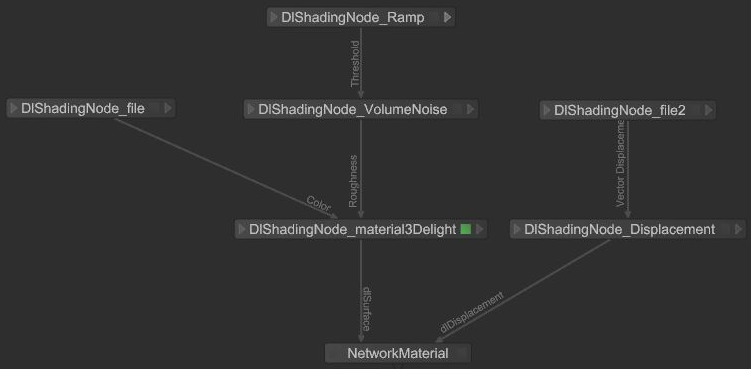Network Materials
Note: This is a legacy workflow, to learn about the new and improved NetworkMaterialCreate workflow, see Building Materials Using NetworkMaterialCreate.
Building a shader from a number of smaller parts is versatile and often more efficient. Complicated shading networks can be built from simple re-usable utility nodes. If a renderer supports the ability to build a shader in this manner, Katana provides the mechanism for connecting the output from one shader to the input of another. These shaders are connected using a renderer-specific shading node, for instance a DlShadingNode node.

Network materials are connected into the recipe through the NetworkMaterial node. This creates a scene graph location and, from this, you add terminals (also known as ports) depending on the type of shader you are creating, such as a PRMan surface shader. Just like a normal Material node, multiple types of shaders can be assigned to a single scene graph location, for instance a PRMan displacement shader can be connected to the same NetworkMaterial node as a PRMan surface shader.

